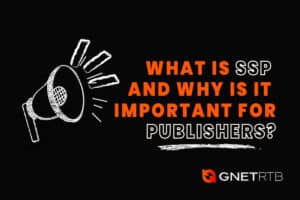If you’re new to the programmatic world and feel confused with so many terms, this article will help you understand the main platforms for programmatic media buying, selling, and auctioning, and how they relate to each other.
What is Real-time Bidding (RTB)?
Let’s start by recalling what Real-time Bidding (RTB) is. RTB is an auction of ad impressions that happens in milliseconds. Although the terms “RTB” and “programmatic” are used interchangeably, they are not the same thing. Programmatic refers to the technology that automates media buying decision-making based on specific audiences and demographic data, while RTB refers to how advertising inventory is bought and sold in an impression auction.
There are three players involved in RTB:
- Supply-side platform (SSP)
- Demand-side platform (DSP)
- Ad Exchange
What is an SSP?
The SSP helps publishers and app developers monetize their inventory by allowing them to make their ad spaces available to ad exchanges. It’s possible to set controls to maximize revenue yield across all demand sources, including minimum price levels, advertiser rules, accepted categories, ad types and locations, etc.
What is a DSP?
The DSP is the counterpart to the SSP and is on the advertiser side. Brands and other advertisers can use DSPs to set up their campaigns and define maximum bids, budget limits, audience targeting parameters, and campaign goals.
DSPs are used by advertisers to buy ad impressions from ad exchanges in the most cost-effective way. SSPs are used by publishers to maximize inventory yield.
What is an Ad Exchange?
The Ad Exchange allows SSPs and DSPs to connect. It’s a neutral and standalone platform that enables the entire buying and selling process through real-time bidding.
How do the platforms interact?
In practice, the process is much more complex due to various reasons, such as a single publisher selling and buying ads, a single publisher being connected to several SSPs, an advertiser being connected to multiple DSPs, or a single DSP or SSP being connected to multiple ad exchanges.
Conclusion
In summary, understanding the differences between SSPs, DSPs, and ad exchanges will give you a clear understanding of how RTB works and will lead to success in buying and selling digital media. SSPs help publishers optimize inventory yield, while DSPs allow advertisers to buy ad impressions cost-effectively. On the other hand, ad exchanges function as a neutral platform that brings supply and demand together.
For those seeking full control, transparency, and no fees, GnetRTB offers its own ad exchange, connecting you directly to global DSPs and leading inventories in Latin America. Contact our team of experts by clicking on this link.




